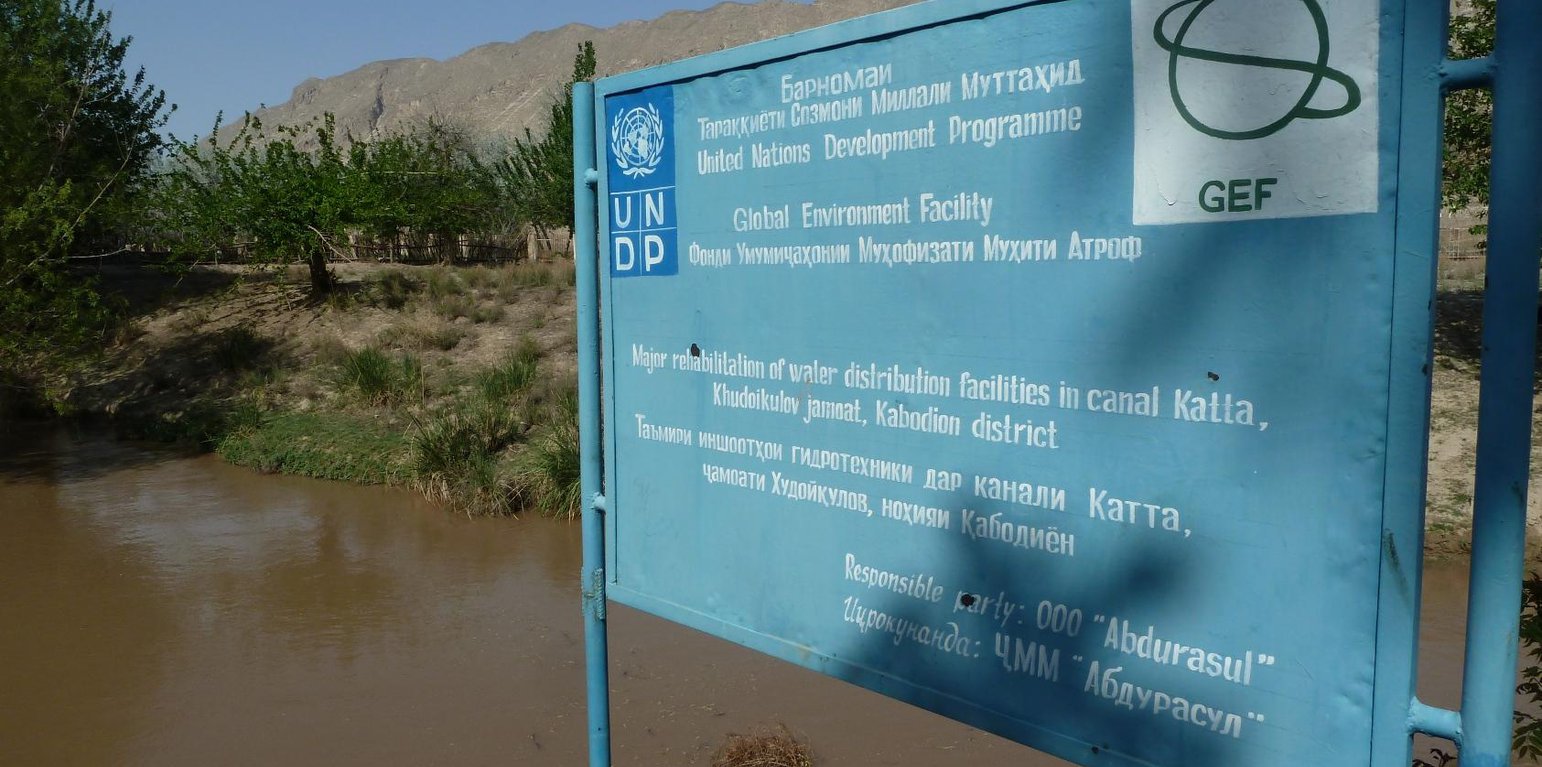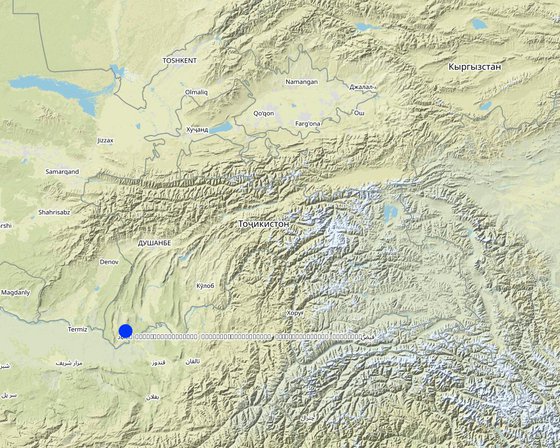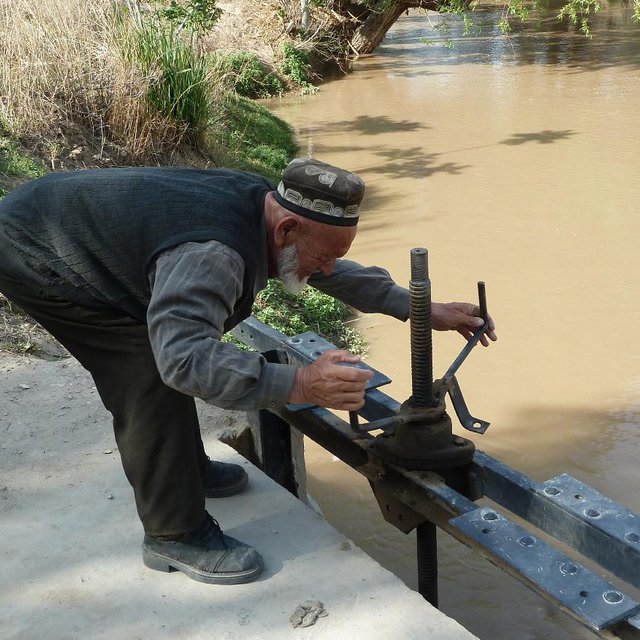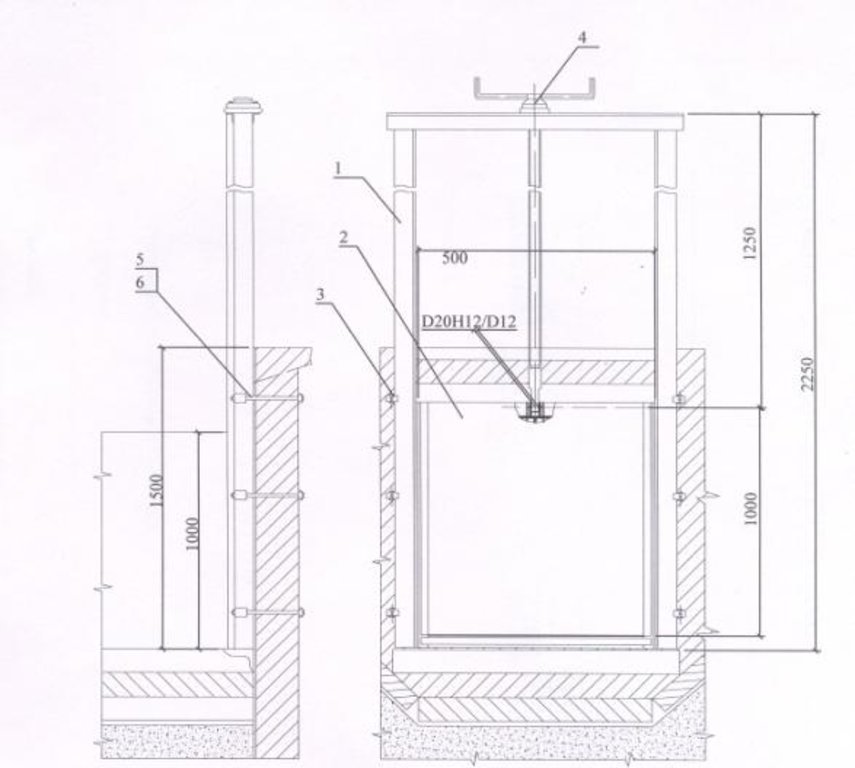



This technology is based on the rehabilitation of iron water gates which regulate the water flow into smaller side canals along the main irrigation canal.
Purpose of the Technology: After the collapse of the Soviet Union irrigation facilities in the Shaartuz area were neglected and consequently broke down. In this arid environment, (only about 100 mm annual precipitation) many fields were subsequently abandoned due to a lack of irrigation water. Conflicts arose between people living upstream and downstream along the main irrigation canals as water flow could not be regulated anymore. During the wet spring period the side canals connecting the main canal with the fields had to be monitored day and night, and could only be plugged with vegetative material to protect the fields from flooding. Upstream users received all the water available, and at the same time suffered from waterlogging and water erosion. Downstream users however suffered from a lack of irrigation water, which led to severe conflicts between the different land users.
Establishment / maintenance activities and inputs: In order to help solve these problems, during 2010 UNDP replaced the 32 damaged irrigation gates along the irrigation canal. 12 big and 20 small iron gates were set up to regulate the water flow. Water distribution was regulated according to norms defining water need per ha of irrigated field and taking into account crop and soil types. Farmers then paid for the irrigation water according to those norms. The financial contributions go the Water Agency and are used for canal maintenance. Ideally the channels require cleaning every year as they get filled up with sand and other dirt washed in by the water. Irrigation gates if used appropriately should not need repair for at least the first five years after installation. After that some minor repairs are required which can take up to 4-5 days for the concrete works to be finished and to dry.
Natural / human environment: As a result of the replacement of these water distribution facilities, the irrigation and ameliorative condition of 3,570 ha of land were improved, including around 1,000 ha of kitchen gardens. Around 32,000 people are now benefiting from this intervention. Livelihoods have greatly improved as farmers now feel encouraged to invest in agricultural activities. According to local farmers, now only 1 out of 4 people have to migrate to Russia whereas before the implementation of this sub-project most of them would have been forced to leave the country. As the neglect of irrigation systems from the Soviet times is a problem all over the irrigated lowlands of Tajikistan, this technology could prove highly useful for a more widespread application.

Lugar: Kabodion / Khudoikulov, Khatlon, Tayikistán
No. de sitios de Tecnología analizados:
Difusión de la Tecnología: distribuida parejamente sobre un área (approx. 10-100 km2)
¿En un área de protección permanente?:
Fecha de la implementación: hace menos de 10 años (recientemente)
Tipo de introducción






| Especifique insumo | Unidad | Cantidad | Costos por unidad (USD) | Costos totales por insumo (USD) | % de los costos cubiertos por los usuarios de las tierras |
| Mano de obra | |||||
| Installation of irrigation gates | Persons/day | 25,0 | 4,44 | 111,0 | |
| Material de construcción | |||||
| Watergate | gates | 1,0 | 300,0 | 300,0 | |
| Costos totales para establecer la Tecnología | 411.0 | ||||
| Costos totales para establecer la Tecnología en USD | 411.0 | ||||
| Especifique insumo | Unidad | Cantidad | Costos por unidad (USD) | Costos totales por insumo (USD) | % de los costos cubiertos por los usuarios de las tierras |
| Mano de obra | |||||
| Cleaning of irrigation channels | Persons/day | ||||
| Repairing irrigation gate | Persons/day | 5,0 | 4,4 | 22,0 | |
| Indique los costos totales para mantenecer la Tecnología | 22.0 | ||||
| Costos totales para mantener la Tecnología en USD | 22.0 | ||||
indirect benefit
Previously the rehabilitation of water distribution facilities land was abandoned
water for household needs
Previously the gates had to be monitored all the time
reduced conflicts about water availability
Farmers feel more confident about investing in other agricultural activities as they can rely on having access to irrigation water which prevents them from needing to migrate for work.